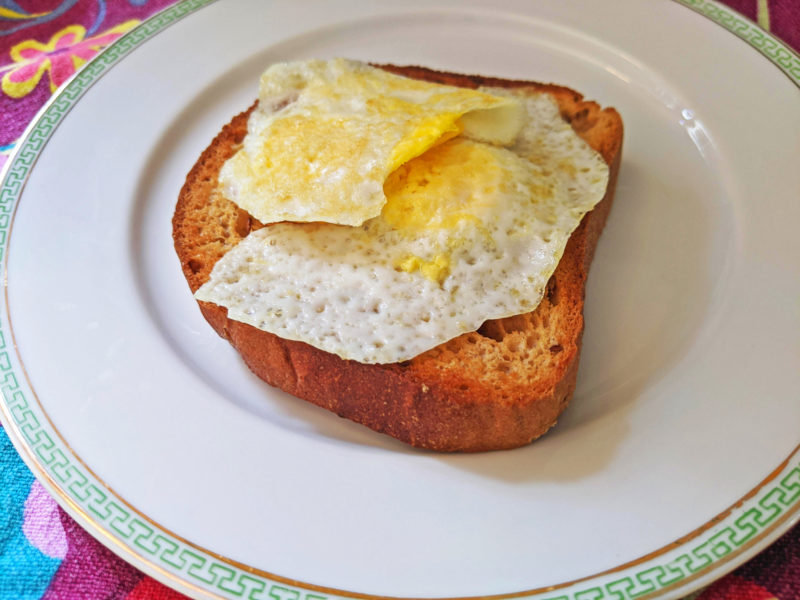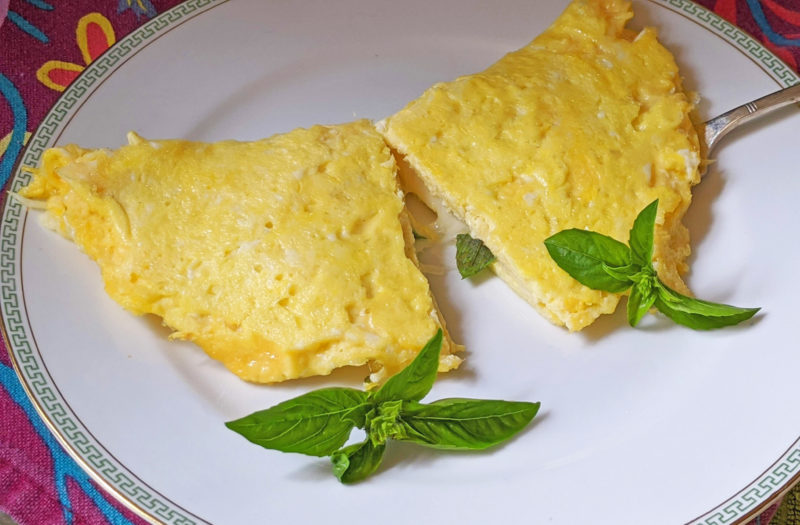Have you ever thought about using quail eggs for delicious breakfast treats? Kelly Bohling shares ideas and recipes for using these nutritious small eggs. All photos by author.
Using quail eggs are a fun and tasty way to change up your breakfast favorites. Quail eggs can be used in place of chicken eggs in any recipe, in the ratio of five quail eggs to one chicken egg. In my experience, there’s no change to the flavor other than an increased richness when they’re showcased as the main ingredient, as in an omelet or quiche. Here, I have collected some of my top breakfast recipes that I personally enjoy making with quail eggs.
Quail Eggs Aren’t Chicken Eggs
Whenever you use quail eggs, I highly recommend opening the eggs into a separate bowl before frying them or putting them in a batter. No matter how carefully you open them, some small pieces of shell are bound to fall in with the eggs. If you stage the quail eggs separately, then the shells will stay behind when you pour out the eggs. I’ve found that a small batter bowl with a little spout is the perfect tool for the job.

Quail egg staging bowl.
Start Simple
If you want to try quail eggs on a small scale to start out, why not try a fried one? Fried quail eggs are cute, bite-sized delights, perfect for taking your breakfast game to the next level. They’re delicious as a breakfast side or in a breakfast sandwich. My favorite way to eat fried quail eggs is on top of a piece of toast spread with mustard or melted cheese.

Fried quail eggs on toast.
I prefer to fry my quail eggs in a nonstick pan. To start, add about a tablespoon of olive oil or butter to your pan, and preheat over medium heat. Open your eggs into a small bowl, and gently pour a quail egg from the bowl into the pan. These fry rapidly, about 20 to 30 seconds a side, so keep a close eye on them! I like to flip mine and cook both sides, but quail eggs work well sunny-side-up, too. Just be sure not to overcook to avoid a tough, rubbery egg.
Ready for Omelets?
If you’re ready to venture into a recipe that uses more quail eggs, an omelet is a great choice! As with fried eggs, use a nonstick pan, preheated on medium or medium-low heat and prepped with a bit of butter or oil. Open 10 to 15 quail eggs (equivalent to two or three chicken eggs) into a bowl. For an 8-inch pan, use 10; for a 10-inch pan, use 15. The convenient thing about quail eggs is that you can essentially cook with fractions of chicken eggs if you need to split the difference between, say, a two-egg and three-egg omelet.

Scramble the eggs in the bowl with a fork until the mixture is relatively uniform, and gently pour into the heated pan. Quickly take a pair of chopsticks and make small circles through the eggs with them to create a desirable curd texture. Try to stop before the omelet cooks through and you make a “hole.” If this happens, tilt some uncooked egg into the opening to fill it. You can either keep tilting the pan and guiding uncooked egg to the perimeter to cook, or flip the omelet and cook both sides. Once the omelet is cooked to your liking, season with salt and pepper and put cheese, chopped tomatoes, or any other filling to one side. Fold the unfilled side on top of the filled side.
Cook only until filling is heated through or cheese is melted. Try to avoid overcooking, as quail eggs can become tough and rubbery this way. (I usually turn off the heat after folding and let the residual heat melt the cheese.)
Feel free to experiment with your omelet fillings. I’ve added fresh basil leaves to some of mine. You could also sauté finely chopped onions and garlic in the pan before adding the eggs for extra flavor. You’re welcome to season or add a splash of cream to the eggs before cooking, although many experienced chefs claim it’ll make the eggs more or watery, which in turn may lead to overcooking.
Mmmmmmm Quiche
The third way you can bring quail eggs to the breakfast table is as a quiche. A quiche is a great opportunity to use up garden produce, and many variations can be made from the basic version.
For the quiche I made here, I used 1 cup of shredded mozzarella cheese and ¼ cup of grated parmesan cheese. I added browned ground beef and fresh oregano, and a couple of black vernissage tomatoes.

Quail Egg Quiche
Ingredients
1 tablespoon butter or olive oil
1 small yellow onion, finely chopped
2 cloves garlic, finely minced
30 quail eggs
¾ cup cream
¾ cup milk
½ teaspoon salt
½ teaspoon pepper
1 ¼ cup shredded cheese (Try mixing different cheeses together for more flavor options!)
Two 9-inch pie shells, unbaked
Optional add-ins
Fresh herbs (basil, oregano, thyme), finely minced
¾ pound ground beef or sausage
1 large tomato, or a few smaller tomatoes, chopped
Bell peppers or hot peppers, chopped
Directions
Preheat the oven to 350 F.
In saucepan, heat butter or olive oil over medium heat. Add onions and cook until translucent. Add garlic (and herbs if you’re using them) and cook until fragrant. If you’re using ground beef or sausage, add to the garlic and onions and brown. Remove from heat. Chop any vegetables you would like to add, such as tomatoes or peppers, and set to the side.
Open quail eggs in a separate bowl. Pour into the larger mixing bowl, making sure the small bits of shell stay behind. Add cream, milk, salt, and pepper to the eggs; mix well. Add cheese and combine.
Spoon in the garlic, onions, and beef or sausage (if using) evenly into both pie pans. Sprinkle chopped vegetables into both pie pans, making sure these layers are even and not heaped. Divide egg mixture between the pans, leaving at least 1/4 inch from the top of the pan to avoid overflow in the oven. You may want to place the quiches on a foil-lined cookie sheet for easier transport (and peace of mind in case they overflow a little bit). Bake for 40 minutes. Let cool 5 to 10 minutes before eating.
You can freeze baked quiche for up to 3 months, so this recipe is convenient because you can make one to eat now and one to save for later. When reheating a frozen baked quiche, do not thaw, but place in the oven and bake at 350 F until heated through. If using a glass or ceramic pie plate, place frozen quiche in unheated oven and then turn the oven on.
Quail Egg Crepes
Finally, you can also use quail eggs to make delicious crepes! These are one of my favorites to have for breakfast or lunch, and the recipe can be adjusted to accommodate a sweet filling or a savory one.

Apple cinnamon crepes
Quail Egg Crepes
Yield: Four 9-inch crepes.
Ingredients
½ cup flour
½ cup milk
5 quail eggs
Butter
Directions
Combine all ingredients in a small bowl and whisk well, until completely uniform. For a sweet crepe, also include a dash of vanilla and 1 teaspoon white sugar to the batter. Let sit for a few minutes to allow air bubbles to dissipate. Meanwhile, heat a shallow frying pan or crepe pan on medium low. Don’t use a nonstick pan for this recipe, as the batter needs to be able to “grab” the surface a little bit to create a thin crepe. The pan should be heated enough to sizzle when a few drops of water are sprinkled on it.
Melt a small pat of butter in the pan, and use a silicone spatula to coat the pan’s entire surface. Give batter a slow mix to make sure it hasn’t separated, being careful not to add air bubbles. Pour about 1/3 cup of batter into center of the pan. Quickly but gently tilt the pan to spread the batter out to create a larger circle before the batter cooks through. Aim to create as thin of a layer of batter as you can. (If the first crepe is ugly, that’s okay, and usually that’s just how it goes. It’s still delicious). Once the top of the crepe is no longer shiny, gently work the silicone spatula under the edges and carefully flip the crepe to briefly cook the other side. Remove and place on a plate. Repeat until batter is used up. Layering the cooked crepes on top of each other on a plate keeps them warm and flexible until you’re ready to add the filling.
You can use any number of fillings for savory crepes, including cheese, browned sausage, avocado, and scrambled eggs. Try topping savory crepes with shredded cheese or chopped green onion. Sweet crepes are equally versatile, and you can fill them with Nutella, jam, or fresh fruit. They’re especially delicious when topped with crème Anglaise, whipped cream, or a dusting of powdered sugar. My favorite fillings are thinly sliced apples sprinkled with cinnamon, jam, and fresh whipped cream, or fresh fruit and powdered sugar.
I especially enjoy a warm fruit filling, so I’ll often heat up a couple of spoonfuls of jam on the stovetop. If you want to make a quick “jam” from fresh fruit to fill your crepes, combine a cup or so of fresh berries or finely chopped apples, pears, or cherries with a tablespoon or two of white sugar in a small pan on the stovetop, and cook on medium until thickened. You can also heat the fruit up on the stove with spices such as cinnamon, nutmeg, or allspice instead of sugar.
Spread the filling in the middle of the crepe. I usually fold in the “four sides” toward the middle, and then fold it in half or tuck in two opposite sides to make more of a long roll. Unused crepes can be stored in the fridge for a few days wrapped in foil. Reheat individual crepes briefly on your pan, or put the whole foil packet in the oven at 350 F for a few minutes until warmed.
I’ve come to really enjoy the addition of quail eggs in my breakfast recipes, and I love the richness and depth of flavor they bring. Have fun trying out these recipes and coming up with your own variations!
Kelly Bohling is a native of Lawrence, Kansas. She works as a classical violinist, but in between gigs and lessons, she’s out in the garden or spending time with her animals, including quail and French Angora rabbits. Kelly also spins the Angora fiber from her rabbits into yarn for knitting, which can be found in her Etsy shop, ThreeRabbitYarns. She enjoys finding ways that her animals and garden can benefit each other for a more sustainable urban farmstead. You can also follow her on Instagram.












